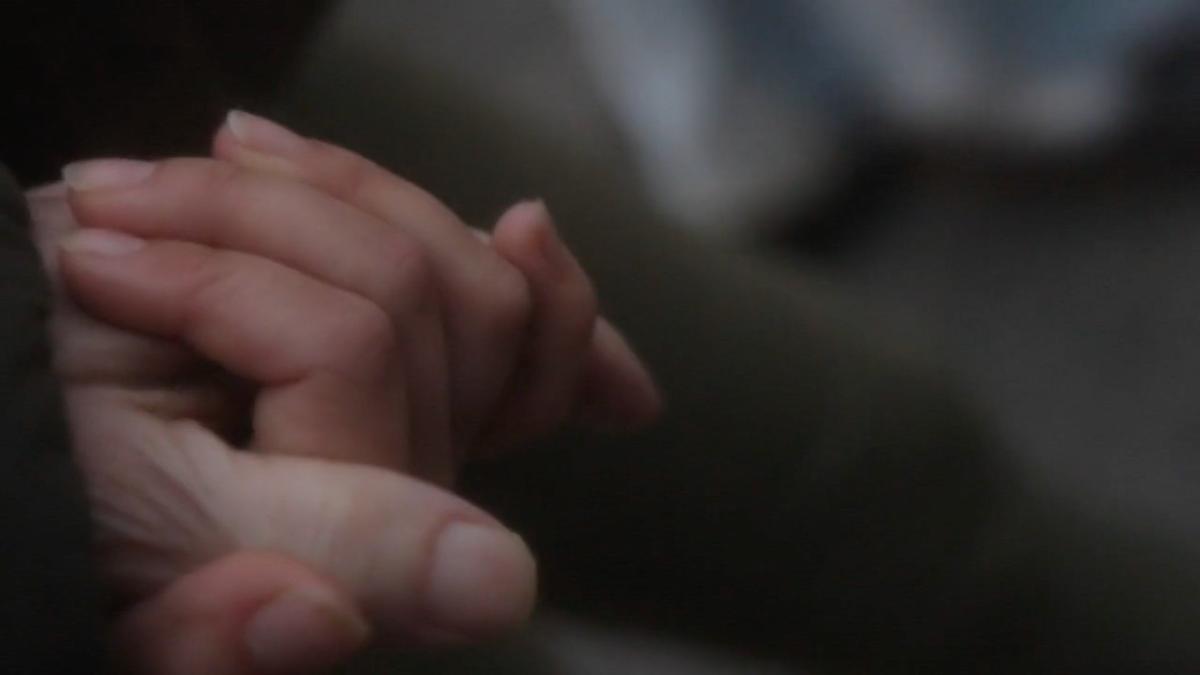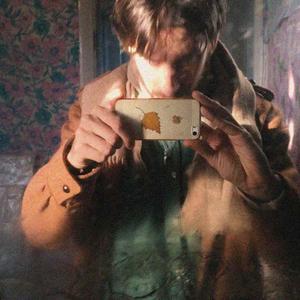Could you tell us a little bit about where you grew up, and how you came to be in Aotearoa?
Sure. I grew up in a small village of Zgornja Bela in Slovenia. I moved to Aotearoa in 2006... I was 15, and that's 16 years ago now.
This puts me on the precipice of identity, of being a Slovenian or a New Zealander. So my identity in terms of nationality is dual at this point. And I have recently moved to Wellington after spending 10 years in Christchurch making films and music videos.
Great. Well, good to have you here. I'm curious about how your early film sensibility was formed, how you encountered film and in what contexts. Could you tell us about that?
Sure. I guess the first encounter with film as an art form, would have been with the work of Andrei Tarkovsky, who was right from the get go, a big inspiration for me. It's one of those rabbit holes that as soon as you know his work, then it opens all these other doors for you. That was around when I was 13, when I was still in Slovenia, I started being interested in that and wanting to make films. And—
So you're 13, when you got interested in Tarkovsky?
Yeah.
How does a 13 year old in Slovenia find Tarkovsky? I mean, did Tarkovsky play in the multiplex, or what?
My dad had a VHS copy of Stalker, and I watched it, and fell in love with it. But since then, I've been delving deeper and deeper into world cinema in general. But I have to say, Stalker was quite close to me then. I could see something in it that was reflective of the world that I was in.
So, desolation? You mentioned you grew up in a small town.
I grew up in a village, then I went to school in a bigger city, Kranj. But the tension between an urban and natural environment was always at play, right from the get go in my own life. When I was a kid, we would go walking a lot in the forest, and that was a sacred place for us, and then an urban world represented a... It was a bit foreign to that, so I could recognize myself in Stalker in some way.
But yeah, that introduced me to that world, and that's a philosophy that I followed in my first couple of years of university, where I would try to create short films with a very limited amount of shots that were elaborately choreographed and where the camera would move very deliberately. And the start of that was the first film in The Short Trilogy of Peace, Moved Twice, which I did in 2011, which is now 10 years ago.
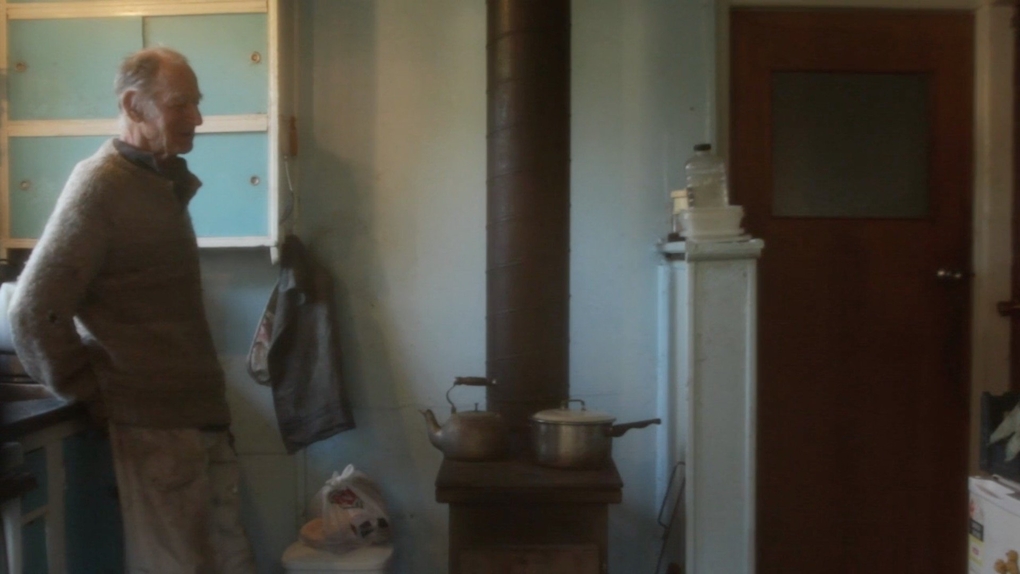
Still from The Short Trilogy of Peace (2016) Martin Sagadin
When you were a student?
Yeah. I did that in my second year at university. And at the time, my idea of how I was going to have a freedom to show things that I wanted to show, was ironically to make myself very rigid... Almost like a manifesto, or a way of working within which I could then do whatever I liked.
Tell us about some of the tenets of this manifesto.
Well, for this particular one, the camera needed to be still, there was no movement of the camera. All of the parameters were designed around the limitations that I had at the time. So, the stillness of the camera was to do with the fact that I didn't have a good way of stabilising it yet. Gymbals weren't invented for example yet. And the camera that I had... Which at the time was a low-end DSLR... The movement in those, I wasn't such a fan of, because of aberrations that were created by movement... Technical, but the scan of that camera isn't like the scan of, let's say, a photograph being taken on film, or film being shot.
It doesn't take the image in all at once, it scans the image from top to bottom. So, if you move the image as it's being scanned, that creates... What do you call them?... Artifacts, movement artifacts. Which I thought were really ugly and betrayed the digitalness of what I was doing. So I wanted to make the best use of the tools that I had. I also wasn't a fan of the digital edge of the image. It was very sharp. So I made this silk filter to put in front of the lens, and everything was shot through that.
Then there were other things, like there were no interviews. Actually I did do one interview, but it didn't make it in. The other thing was that I couldn't plan for things to happen. It was just catching things as they were happening, so I wasn't orchestrating things. I was just observing, or allowing for things to happen in front of the camera.
It's really interesting to hear about your production methodology. In terms of what we see onscreen, one of the three films, Moved Twice, is an intimate look at two elderly people, I'm curious why a young person of 20 was so interested in older people?
Well, one of the things that I was missing in New Zealand were grandparents. I had lost a connection to that generation of people in Slovenia. I had a connection with the generation below them, the generation of my parents. And I had a very good connection with my peers who were my age, but I felt really cut off from the older folks at the time. And in Moved Twice, there is an old couple. We look at one of their mornings. They became like friends or surrogate grandparents, for me personally, while I was at university. And that's what drew me to capturing something from that time.
There were also a lot of parallels to my own life. They were immigrants as well. It was a way for me to see myself with a bit more context. Because when you're an immigrant yourself, it's very hard to contextualize yourself. I think a lot of immigrant artists struggle with that, and make work specifically to do with that, to do with defining their identities. And I guess at the time, that was a way for me to define my own identity.
...I couldn't plan for things to happen. It was just catching things as they were happening, so I wasn't orchestrating things. I was just observing, or allowing for things to happen in front of the camera.
The Short Trilogy of Peace (2016) Martin Sagadin
How did you meet them?
Well, Tina, who was the lady that... I met her at an op shop, and we struck up a conversation about Mahler, and classical music in general. And she mentioned to me that she writes poetry, and she really wanted to show me her poetry. So things just went from there. We just became friends immediately. And I really loved how earnest her poetry was. There's a poem that she recites in the film.. It's one of her poems... And it's just about joy and peace and this very naive world, like a utopic world. And I was really attracted to that, and the hope that there was with that, despite that... I don't know... Maybe despite the age, despite the differences between us, that was also a lot that we had in common.
That's so nice. And the ending of the film... Without giving it away... Is such a surprise and so optimistic, and beautiful. A great moment.
Thank you, Mark.
I generally get that feeling out of literature, from something like Dostoyevsky or Thomas Hardy.
The trick to that ending, is the silence. Is the shutting down of the equipment in the factory for the rest of the film, and the rain stops falling, sunshine comes out, and then there's this silence. Yeah, that was for me, at that time, an approximation of some kind of peace.
Right.
That's where the idea for making a trilogy of these films about peace came from. So, the first film is about that peace that comes in old age. And it's about that peace that comes at work, where you're doing something that is your job, and you're good at it, and there's a harmony there. And the fact that it's a very industrial environment that we're looking at, is incidental to that.
So, I think this is a good point to pivot, to talk about Oko na Roki, which I'm sure I'm saying improperly.
The interesting thing about the pronunciation of it, and one of the reasons why I chose this particular name, was that one way I can make it make sense in New Zealand, is that the pronunciation of it is actually very similar to how you would pronounce a Māori word.
So every letter is said. Oko na Roki. And our r's are rolled, like in te reo. Yeah, so for example, there's no exotic letters in that title, even though it's a Slovenian title. I was hoping people would at least be able to attempt to say it.
Oko na Roki (2018) Martin Sagadin
Well it’s fun to try. Before we were discussing Moved Twice, which is an intimate view of an old person nearing the end of their physical life. In Oko na Roki, we see young people in their prime. To me there's still an edge of melancholy across the two films. Do you think there are themes that bridge Short Trilogy and Oko na Roki?
Yeah, there is a lot that links the films. Despite the fact that they have completely different methods of being made... In fact, they're polar opposites, in terms of the methodology for capturing the footage. In part, I was a little bit stifled by the manifesto that I'd made myself while I was working on the trilogy. The limitations that I'd given myself were too difficult to work with. And by the time that I'd finished that film, I couldn't imagine myself making another film with the same rules. I'm sure I could do one now, probably, if I found the right subject matter. But at the time, I really was trying to find a different kind of freedom while still trying to express myself as an artist.
Could you talk more about the development of your film-making sensibility?
I think it's important to note something that might sound like a basic realisation, but it's one that I had after I finished my undergrad studies at university. So, in my undergrad years, I was focused on developing “my style”, or my voice as a filmmaker. And by the time that I finished my undergrad, I actually realized that I couldn't help that style, or my way of seeing the world influencing anything that I'd done. I'd done a few music videos and a few other short films that were different to what I'd wanted to do necessarily, but still they had something about them that was true to me. And so I was then able to go, "Right, well, it almost doesn't matter what I do, no matter what I touch, it's going to have some sort of seal of mine, in some way."
And so I created another way of working, which, at the start, was incidental and intuitive and automatic, and to do with collecting footage. I'd started doing this around the time when I was in Slovenia visiting my dad and my grandparents, which was actually the time where I shot the last portion of The Short Trilogy of Peace. But I was finding myself, even then, desperately trying to record things and hold on to things that I knew I wouldn't be able to see for a long time, potentially. And I haven't been back since 2014. It's been seven years now, since I've been back home. What, home? Back in Slovenia.
In part, I was a little bit stifled by the manifesto that I'd made myself while I was working on the trilogy. The limitations that I'd given myself were too difficult to work with. And by the time that I'd finished that film, I couldn't imagine myself making another film with the same rules.
One of your homes.
In one of my homes. So there was a desperation that started the methodology of filming Oko na Roki. This desperate attempt at holding onto things that I saw slipping past me. The opening shot of the film is a landscape in Slovenia that I'm filming out of a car window, and it's going past. As time goes... And I think it goes on for two minutes, that shot... It's just everything that I know, and I'm familiar with, and I love, and I want to hold on to. It's slipping past me. And I wanted to share that bittersweetness of memories passing by, with my audiences. And at the time I found myself quite drawn to the diary-work films of Jonas Mekas, who has been doing this since the ‘50s.
And I could see that as a legitimate way of making a film, as well as the fact that I had a phone that had a camera at all times. It was an immediacy with which I was able to capture moments, which would then become memories, which would then become important to me later in the edit suite. So there's a melancholy that's essentially the desperation of holding on to memories.
When I watched Oko na Roki, I was reminded of this phrase that's been spoken about Margaret Tait, that she “stalked the image.” There's a shot where light drifts across the front of an oven from an open door, you move towards the doorway and then you're suddenly outside in the open air. I can sense that wish to inhale the scene, to know it, to capture it.
Yeah. Well, the thing that I realized, is that actually film, as a medium, as an art form, is technically way better at capturing and holding on to visual and audio moments, than even our brain is. Our brain is constantly creating our world around us. And as we remember it, those memories are a creative endeavour as well. They get constructed by our brain.
What do you think the difference in rhythm is between the way the brain remembers memories, and the way you make your films?
Well, there's not that much of a difference, or at least there wasn't at the time when I was editing this film.
How did you choose which images to include in the film?
So, there was a focus in this film on not only capturing things as they were at the time, but also as I was editing, I knew that different things mattered to me, than would matter to me in a year. So people that were in my life, animals, objects, places, things that I held close or wanted to keep closer still... These became the content of this film. And if I looked back on that same footage now— it's been three years now, since that film came out—I would probably make a different film because different things matter to me now, or I’d want to hold onto a different memory.
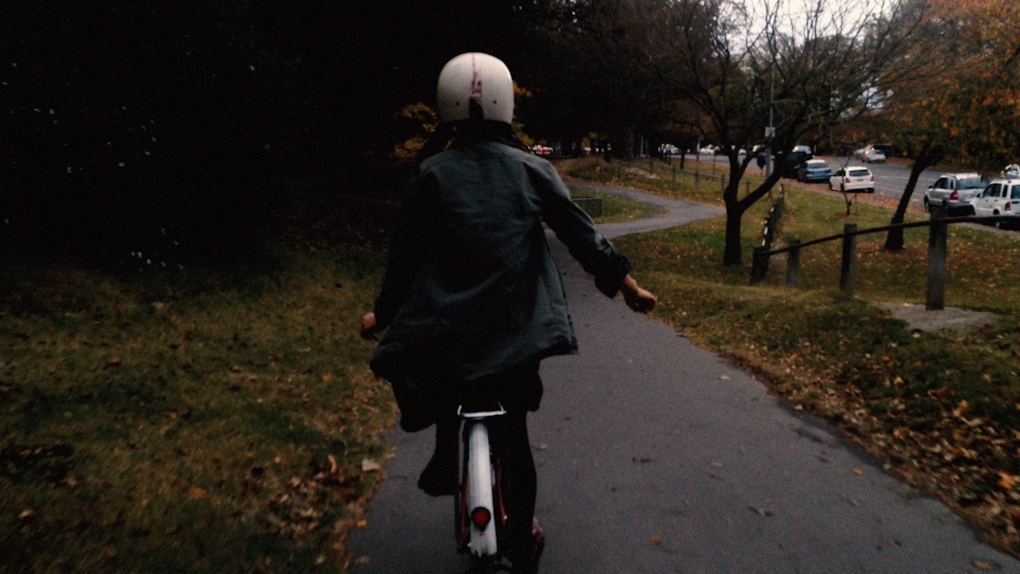
Still from Oko na Roki (2018) Martin Sagadin
You must've had so much material. How did you actually begin to organize all those memories? I mean, in a way it strikes me as a problem for all of us. With the digital camera, we have so many images. How did you begin to make a coherent document that you could present to other people?
Yeah, well, this idea was actually at the core of why I wanted to make this film: this idea that we're all walking around with these disorganised films in our pockets. I feel like every person who's got a smartphone has this potentiality of a film that could be made out of what they have captured over the course of their lives. It's all there. It's just that it's very difficult to present it as anything. And I have the advantage and privilege of having a film education, and the knowledge of editing, and I can present things in a way that people might want to watch them, I think. I hope. So, I thought that this was a challenge to others as well: to try and make sense of their own captured lives. Because everyone could make a film, like what this film is.
It's intentionally very simple; it's using very rudimentary equipment and technology in order to exist. There's nothing that's captured in this film that isn't available to just anybody. And by that, I really mean anybody. It's even more the case now than when I shot it. I started shooting on an iPhone 4S, which now I'm pretty sure you can buy on trademe for $100. Anybody could grab hold of this equipment and make something out of it. And I was really intrigued by that, and I just wanted to do something with the equipment that I had on hand at all times. And this was also the main difference that I saw between my work, and the work of Jonas Mekas.
...we're all walking around with these disorganised films in our pockets. I feel like every person who's got a smartphone has this potentiality of a film that could be made out of what they have captured over the course of their lives.
MW How so?
MS So, Jonas Mekas obviously worked a lot in digital as well, but his long form diary-work... As in the feature films that are his diary- works... were made on his 16mm Bolex camera. And there's a real delay, I think, in the amount of time it takes to get a Bolex camera ready to go and to film your life. And it's quite an imposing thing, and people behave differently around a big camera. But I had the advantage of having my phone, which was within seconds reach of capturing things that were around me. I was able to capture things immediately as they were happening. I didn't have to go into my suitcase and unpack the camera, and wind it up and start shooting.
Even the difference between my phone and my digital camera, a DSLR, was marked. People did behave differently when they saw a big camera compared to when they were filmed by a phone. There is a kind of comfort that comes with the phone, both for me when I'm shooting and for the person being filmed, if there's a person involved. So there's a lot of reasons for the choice of gear. And it's what made me think, "Okay, well, this is special and it's closer to what a memory is like", than what a film might try to either recreate, or capture in a different way. I guess, like something that's similar... Again, I go back to Tarkovsky. Tarkovsky has made a memory film, The Mirror.
And that film is not a diary film. It's recreations of his memories with actors. So I could see even then, that there was something Tarkovsky-like, in this intuition.
And there's a line that he says in one of his books that has always struck me where he talks about how his ideal way to make a film would be to film someone's entire life:
"This is how I conceive an ideal piece of filming: the author takes millions of metres of film, on which systematically, second by second, day by day and year by year, a man's life, for instance, from birth to death, is followed and recorded, and out of all that come two and a half thousand metres, or an hour and a half of screen time.
And even though it would not be possible to have those millions of metres, the 'ideal' conditions of work are not as unreal as all that, and they should be what we aspire to. In what sense? The point is to pick out and join together the bits of sequential fact, knowing, seeing and hearing precisely what lies between them and what kind of chain holds them together. That is cinema." (1)
In this quote he aspires to something like what I was able to do with the equipment that became really commonplace by the time that I finished my undergrad studies.
But your question was, how did I organize it all?
Yes.
I think it was around 50 hours of footage that was gathered over the course of four years. And the organising of it was worked into the editing process itself. So as I was looking, I was already editing. I would already grab things that were interesting to me as I was even just reviewing the footage. Then that would result in larger chunks that would then get looked over again. And I would slowly wither things down, shaving away anything that wasn't necessary for a scene, and then moments within the film that could then be interconnected. And so parts of it are chronological, but mostly it jumps all over the place, over the course of four years of my life.
One thing that I needed to do was I needed to stop at some point. I needed to stop filming and then make sense of it. I have continued shooting diary-like footage since I finished Oko na Roki, but for the purposes of that film, I needed to call it at some point. The 1st of January, 2018, was my arbitrary cutoff point where I'd said, "Okay, well, no more filming from then on, that would make it into this film." That was then a decided pool of footage that I was editing. I think if I'd kept going, I'd never have finished the film.
I love looking at other people's old photographs, like family photographs of when they were kids, or when they were growing up. It's so revealing and so magical, and so transportive. And it builds an image of a person. You almost get to know them somehow, in some way.
Is it more fun to shoot the film, or to edit the film?
I find it really fun looking back at the footage. I love looking at old photographs. I love looking at other people's old photographs as well.
That was one of the clues as to the fact that this could work. I love looking at other people's old photographs, like family photographs of when they were kids, or when they were growing up. It's so revealing and so magical, and so transportive. And it builds an image of a person. You almost get to know them somehow, in some way. And so I figured, "Well, that is possible. It is possible to share that. It is possible for it to be interesting." Yeah. So, what's more fun? It's all fun. I'll be filming just whenever I feel like it. That is really the only criteria for when that kind of footage gets captured. It can be any time.
So there is already an attitude of excitement to film something whenever I do. And then when I'm looking back through the footage, it's like looking back through my memories, and that's neat. It's neat to even look back on your old photos, on your phone even, from a year ago, let alone 10 years ago. Things become valuable in that way. Like a blurry photo of a party that you had in 2006 suddenly becomes really meaningful because it's a time in your life that no longer exists. And maybe it involves people that have changed, or you've changed. So time is what has created the meaning within the images that you then decide to show to others. Or at least for me, that was the case.
Were you surprised by any of the footage? Did any kind of theme emerge, that you never knew that was there?
Yeah, there were a few interesting things that I noticed. I noticed that I was looking a lot at the ground, not so much at the sky. There were a few sky shots, but I was interested by the fact that I was mostly pointing my camera down. I didn't expect that. And I don't know what that means. Maybe you could read some sort of symbolic meaning into that or something—
But there were a few other things. It was interesting that the thing that I didn't consider until afterwards, which had to become very, very important, was the consent part of everybody in it.
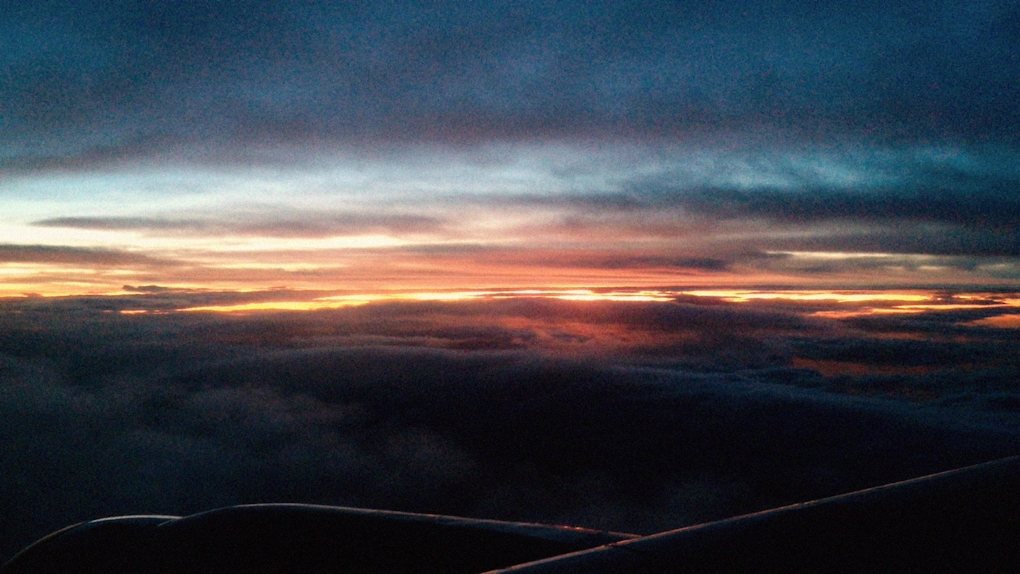
Still from Oko na Roki (2018) Martin Sagadin
Wow.
That was something that was really... I mean, obviously it's a hard thing to ask for consent anyway, in any documentary that you're making, but this was more extreme because it wasn't anything in particular. It wasn't like I was setting up a documentary to be filmed. It was just people's lives. And in a lot of cases, it was people's lives from a while ago, which means that it captured people as they no longer are. So there were shots of couples that were no longer together. There were shots of pets that had died. Things that were impossible to go back to. There's a kind of complexity to do with the consent that I was... Aware of when I was doing it, but it didn't become fully clear until I'd finished the film. And when I finished the film, I said to myself, "Okay. Well, I'm going to personally ask every single person that appears in the film." And if anyone says, "No, I don't want to be in it." I would, no questions asked, get rid of that part of it.
And it just so happened that there were only a very few moments where people didn't want to be shown. But the majority of it was done on trust. And the language of the film, if you're watching it, has a few very sly hints at the consent that's happening between the camera and the person that's being filmed. There is not a single shot, for example, of someone holding their hand up to the camera and going, "No, don't." It's so extreme, there's not even any shot of an animal being frightened by the camera. There's a shot, for example, of a sparrow in it, and I cut that shot before the sparrow flies away. So, everything's geared towards the camera's character being one that's trustworthy.
I think it was essential that the camera had this character that was trustworthy, and that the editing process eliminated any hint of a lack of consent.
Right.
It needs to be. Otherwise, the audience watching the film would feel too voyeuristic, would feel uncomfortable. And I did get some people in the audience that were slightly uncomfortable in some parts of the film because of how personal it is, because of how much life it shares. But I think it was essential that the camera had this character that was trustworthy, and that the editing process eliminated any hint of a lack of consent. That, I hope, has created a film that is easy to watch. There's a film by a Russian director Victor Kossakovsky called Tishe!, and it's a diary film that he shot out of his window in St. Petersburg. And he captures all sorts of wonderful scenes of people going about their business. He captures a lovers’ quarrel in the rain. He captures an old lady trying to tell workers to be quiet. All sorts of things.
And that film has an explicitly voyeuristic character of the camera. The camera's particularly voyeuristic there, because we're looking at someone who doesn't know they're being filmed, explicitly and constantly, and that's the whole premise of the film. And I wanted that kind of gaze to be totally absent from my film. Other examples are, there's very few shots of the camera hiding behind a wall and looking at something. It's all that kind of film language that would make you feel like you're somewhere where you shouldn't be. I wanted the audience to feel like they were exactly where they should be—in a kind of comfort. So yeah, that film is like the opposite attitude to what I was trying to do. It's a diary film as well. And it's captured footage, random footage as well, but it's totally the opposite attitude of the camera.
Well, that's great, Martin. I think that's a nice place to end... That line about wanting the audience to feel exactly where they're meant to be.
Thanks Mark.
